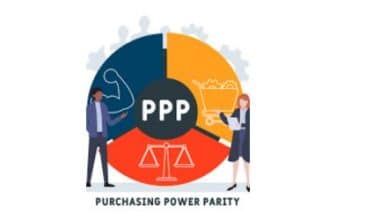Do you recall unwrapping your first computer? Things have changed dramatically since then. Nowadays, computers come pre-installed with an operating system (OS). The one catch is that these keys aren’t valid for any imaging software, so if you want to photograph machines at scale, you’ll need to take extra precautions. But there is good news! To assist with this, we have a Microsoft Volume License. This guide has effectively addressed every aspect of the Microsoft Volume License.
What is Microsoft Volume License?
Microsoft Volume License is a service offered by Microsoft to enterprises that require multiple licenses but do not require additional copies of the software media or documentation. The volume license’s goal is to make it easier and less expensive to operate Microsoft software on several computers inside an enterprise. Office 365, Skype, OneDrive, and Teams are among the Microsoft products offered for volume licenses.
Purchasing boxed software or a full-packaged product (FPP), for example, may include additional components such as media, a user’s guide, and other packaging elements. Microsoft’s Volume Licensing Program enables a company to eliminate these extraneous elements and prices, resulting in a more personalized purchase option.
A volume license key (VLK) restricts an organization to a predetermined number of installations. It also keeps track of the number of installations while keeping the VLK private. If necessary, the organization may be subjected to a software license audit to ensure that the conditions of the agreement are met.
How Does Microsoft Volume License Work?
What occurs once you purchase a Microsoft Volume License is frequently determined by the size of your organization.
A Multiple Activation Key (MAK) is typically issued to small firms (those with 1,000 or fewer machines). This is a single key that is valid for all of your organization’s machines. You can expand your MAK license privileges by purchasing more machines over time. After a computer has been imaged, it will activate against Microsoft’s servers within a few days.
Some firms may encounter the problem of machines that cannot or should not connect to the internet outside of the corporation. In certain cases, Microsoft provides Key Management Services (KMS). This Windows server-based role allows the device to be activated against an internal server within the business.
What are the Benefits of Using a Microsoft Volume License?
There are several significant advantages to employing this form of license arrangement. Let’s take a closer look at the advantages of Microsoft Volume Licensing.
#1. Cost-effective
Purchasing separate licenses for each person or device will result in excessively expensive – and frequently unpredictable – costs.
When you centralize your organization’s software purchases, you can benefit from lower bulk pricing without having to pay for installation, operation, and maintenance charges separately.
#2. Flexible pricing options
Volume licensing provides more flexible payment options, allowing you to select the pricing option that best meets your needs in terms of:
- Length of agreement
- Number of devices
- Optional add-ons
- Payment method
In other words, no one is pressuring you to pay for anything you don’t want!
#3. Easier to manage
Another advantage of adopting Microsoft Volume Licensing is that it is simpler to handle from a sysadmin standpoint. With a volume license, you simply have one key to remember.
Compare this to the days when each device had its own product key for the Windows operating system — and every administrator had an Excel doc with all these license keys (updated manually, of course). (You’re not alone if you just broke out in a cold sweat.) It is also easy to reuse particular license keys when using volume licensing.
#4. Ideal for distant work
According to research, 25% of professional occupations in the United States will be remote by the end of 2022. Companies must implement policies that encourage employees to work outside the workplace. Access to cloud-based software licenses that can be used at any time and from any location is a critical answer.
#5. Assurance of Software
Software Assurance is a feature of Microsoft Volume Licensing that provides services and advantages to assist your organization’s productivity. This includes services like 24-hour technical support, technical training, exclusive rights, and license upgrades to the most recent Microsoft software releases.
Sysadmins benefit from Software Assurance as well. It enables them to fully deploy, administer, and use Microsoft products. Furthermore, with unique settings and configurations, Software Assurance allows sysadmins better control over their environments.
#6. Training and assistance are provided.
Because bulk licensing is done through a certified reseller such as Amaxara, getting your licenses through volume licensing ensures that you have a committed executive assisting you throughout your transaction.
While you may be aware of the advantages of volume licensing, it is the responsibility of a Microsoft volume licensing reseller to guarantee that you obtain the best bargain and make the most of these advantages.
Types of Microsoft Volume License
Microsoft offers two licensing methods for all software and IT purchases: perpetual licensing and subscription licensing. The primary distinctions between the two are the payment cycle and the term of software ownership.
- Perpetual licensing: This is the traditional method of doing business, in which the consumer pays a one-time, lump-sum fee for everlasting access to the product.
- Subscription licensing: Customers pay a recurring monthly or annual subscription charge to utilize the product in this arrangement.
The two licensing options for business owners have a clear winner. Here’s a useful table of comparisons.
| Perpetual Licensing | Subscription Licensing | |
| Pros | Higher upfront cost. You need to backup your database. You need to be responsible for upgrades and maintenance. Software updates may hamper performance | Lower upfront cost. Easier to maintain, as the software vendor handles the maintenance and upgrades. Can be used on any device that has internet access |
| Cons | Higher upfront cost. You need to back up your database. You need to be responsible for upgrades and maintenance. Software updates may hamper performance | There is no direct ownership of the software and data. Can’t continue using software if the supplier goes out of business. |
Because of its cheap upfront costs, flexibility, and faster access to software upgrades and maintenance, subscription licensing is the preferred method among business owners.
Pricing for Microsoft Volume Licenses
So, we’ve finally arrived at the portion you’ve undoubtedly been waiting for.
Unfortunately, it is not as simple as listing multiple prices. The cost of your Microsoft Volume Licensing subscription will differ depending on criteria such as:
- The combination of Microsoft products you need licenses for
- Where do you buy your software licenses
- The size of your business
Because of these characteristics, there is no one-size-fits-all Microsoft Volume Licensing cost. But that is why this is significant.
To guarantee that you are paying the lowest possible price for your software licensing requirements, you must pay great attention to the type of licensing option you select and the Microsoft Volume Licensing reseller from which you purchase the license.
You don’t even have to bother about a license if you choose the proper reseller. A Microsoft Volume Licensing distributor will recommend the best plan for you, keep you up to speed on advantages, special offers, and savings, and negotiate the best pricing for you.
If you want to learn more about the price choices for your company, contact a Microsoft Volume Licensing reseller.
Microsoft Licensing Support & Solutions
Let’s go over where you may purchase a Microsoft volume license and why you should choose the right solution.
(You wouldn’t buy a thing without knowing which store has the best pricing, the best quality, and the best after-sales service, would you?)
#1. Volume Licensing Service Center
The Volume Licensing Service Center (VLSC) is a program that allows you to manage and access your Microsoft license keys and products.
It functions as a dashboard from which you can access all of your licensing information and agreements, check the status of freshly purchased licenses, and activate Software Assurance. You can access the Volume Licensing Service Center by entering the registered email address for your organization.
The VLSC, on the other hand, just helps you manage current licenses and does not assist you in purchasing volume licensing plans. Microsoft Volume Licensing is largely sold by Volume Licensing Partners.
#2. Certified Microsoft Volume Licensing partners
Volume licenses are available from Microsoft Volume Licensing resellers. Certified Microsoft Partners make it easy to locate and select the best volume license option for your company. They will also assist you with installing, upgrading, and maintaining the program.
Microsoft’s licensing agreements are continuously changing, and even when they aren’t, grasping the licensing concepts takes a lot of knowledge.
Challenges of Microsoft Volume Licensing
Volume licensing has various difficulties, just like any other option. Although they aren’t cause for concern, it’s always a good idea to be informed of what you’re getting into.
#1. Modification of licensing terms
Microsoft alters licensing terms from time to time due to constantly growing products and advances. Existing consumers may find the changeover difficult when this occurs, and some items and regions may be exempt.
#2. Lack of a global licensing program
Because Microsoft has a decentralized culture, employees in various divisions are free to make their own decisions. As a result of numerous financial or technical issues, Microsoft product licenses may have varying costs in different regions. Similarly, distinct sets of rules control licensing depending on the country.
Buying volume licensing for a multinational workforce may appear hard due to challenges like these, even though they are under the same agreement.
#3. Paying more than you need because you don’t know the rules
Those who are unfamiliar with the rules or are unclear of the best path may end up paying more than they need to. Microsoft conducts software audits on a regular basis to guarantee that its customers fulfil licensing terms. Some business owners may not fully comprehend these requirements, so they obtain multiple licenses to cover their bases – sometimes unnecessarily, resulting in additional fees.
Who Should Buy Microsoft Volume Licensing?
Microsoft Volume Licensing is appropriate for companies of all sizes, ranging from multinational corporations to small businesses, that require more than five licenses.
Assume you want to purchase Microsoft licenses for all devices in your organization in an efficient, cost-effective, and flexible manner while also receiving ongoing support and training. In that case, it is ideal for you!
Is Microsoft Getting Rid of Volume Licensing?
The Microsoft Volume Licensing program’s Open Program is designed for purchasing numerous perpetual software licenses, with or without Software Assurance. It is made up of three parts: Open Value, Open Value Subscription, and Open License. The final, for ad hoc and non-standardized purchases, will be phased out on December 31, 2021.
What Happens When Microsoft Volume Licensing Expires?
Except for Microsoft Open, the Expired stage lasts 90 days for Volume Licensing items. Users have standard access to the Microsoft 365 interface, Microsoft 365 apps, and services such as email and SharePoint Online at this point. You can still access the admin centre as an administrator.
What is the Difference Between Volume License and Retail Version?
According to Lemington Consulting, retail licensing allows you to purchase software after purchasing your machine. You can move it to another device after deactivating the original. With volume licensing, you can install Microsoft software on many computers with a single product key.
Can You Transfer a Windows Volume License to Another Computer?
You can transfer your Windows 10 license to another PC if the Windows Script Host reports that you have a retail license. If you have a volume or OEM license, however, you will need to purchase a new Windows 10 license for a new PC.
Can I Resell Microsoft Licenses?
Microsoft items can undoubtedly be resold. Microsoft does have its own reseller program where you can set up an account. If you are accepted, you will be able to place bulk orders and become a Microsoft license reseller.
Conclusion
Volume licensing is the most environmentally friendly method of photographing your fleet. It is the most environmentally friendly method with the fewest moving parts. It is the simplest for IT to manage and the most compliant.
To get started, simply contact your preferred software distributor. Tell them how many machines you have and that you require a Microsoft Volume Licensing agreement. You get the agreement in place and credit for any initial licenses you may have acquired for a little cost.
Consider this when requesting your next quote from your reseller; you’ll be pleased you did when it comes time to reimage both new and current devices across your enterprise.
- DIGITAL PRODUCTS: How To Create and Sell Them
- MICROSOFT LOGO: History, Meaning, Evolution, Best Trademark Practices.
- Best Data Management Software For Your Small Business In 2023
- PROJECT MANAGEMENT APP: Top Best Apps for Productivity in 2023
- Systems Analyst: Meaning, Job Description and Salary






